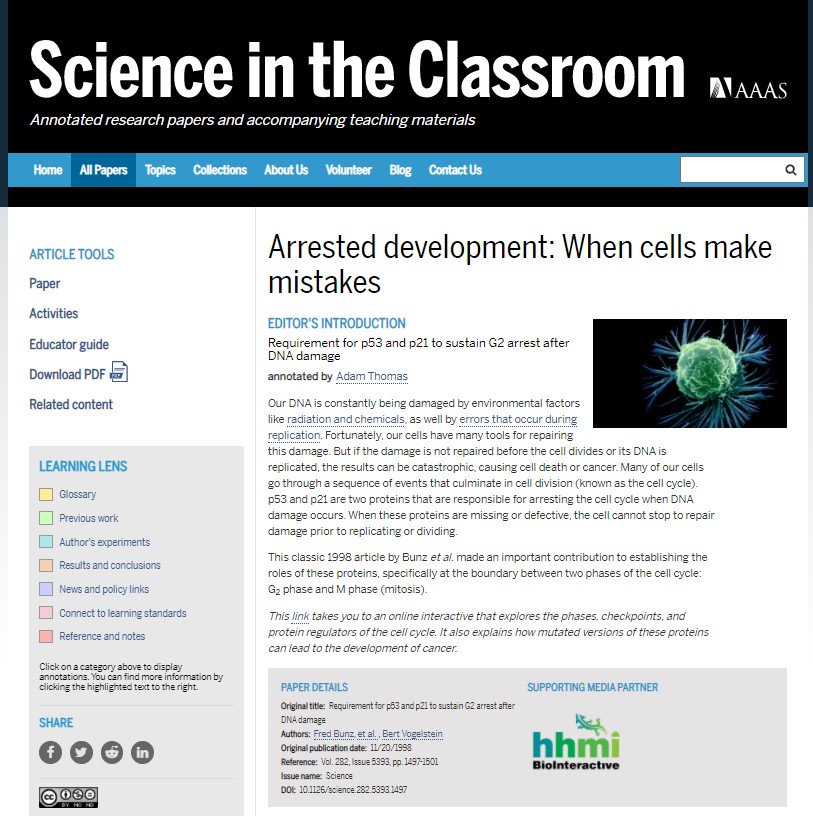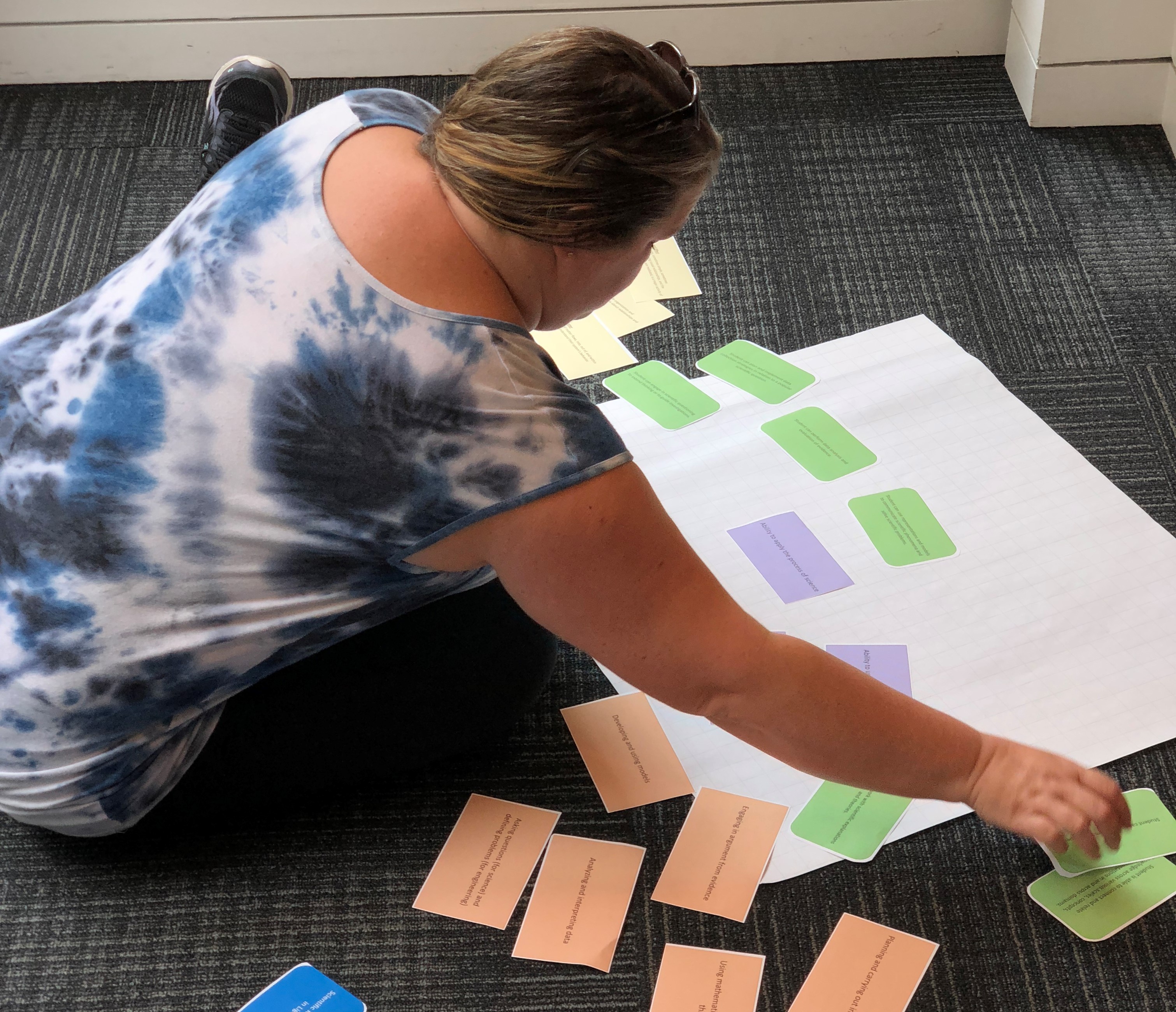Brief
Bridging the Gap Between Scientists and the Public
Evidence-based decision making has been on the decline, particularly in the United States (Alberts 2017). In addition, trust in the scientific enterprise has become more divided, frequently along partisan lines (YouGov poll 2017). To bridge this gap and improve scientific literacy, Science in the Classroom (SitC), an initiative of the American Association for the Advancement of Science (AAAS), makes scientific research accessible to high school, community college, undergraduate students, and the public through a collection of annotated research papers primarily from AAAS’s Science family of journals. The annotations and accompanying educational resources provide layers of key information and explanations that make reading active, enabling students to engage with their text, ideas, and peers in a deeper, more meaningful way. The annotations, which the reader turns on and off, include vocabulary, methods, descriptions of prior research, and explanations of major conclusions. In the widely used paper, Arrested development: When cells make mistakes, which looks at the body’s response after DNA damage occurs, digital media and figures provide even further context to the research.

Each paper includes an educator's guide outlining connections to science competencies within STEM learning frameworks and standards. Educator guides also provide suggested activities, discussion questions, and resources for further exploration of the subject.
The research paper, annotations, and supporting resources contribute to a better understanding of how researchers use evidence to draw conclusions and provides exposure to “real” scientists. By engaging with practicing, publishing researchers in ways accessible to non-experts, SitC helps bridge the gap between scientists and the public. Nurturing communication across communities of students, educators, science communicators, and researchers highlights the importance of evidence-based reasoning, demonstrates the true nature of the scientific enterprise, and emphasizes that scientists are real people. All of SitC’s annotated papers are freely available on the website.
Providing Opportunities in Science Communication
SitC provides an opportunity for interdisciplinary translation of research that includes teachers, scientists, literacy experts, librarians, publishers, journalists, scholars, and students from around the world. The paper annotation process offers graduate students and postdocs experience and training in science communication and education. The program has an added benefit in supporting the development of current researchers’ science communication skills and their ability to communicate their work in educational and public settings. The SitC editorial process allows experts to tell their research stories and provides opportunities for scholars to contribute scaffolding for further understanding, demonstrating that science is a collaborative and human endeavor. SitC annotator or program volunteer opportunities can be found on the website.
“SitC helped me to learn to describe current research and its importance to a broad audience (not just follow scientists).” —a student annotator
Making Research More Accessible to Students
Primary literature can be a powerful tool for learning and teaching with an emphasis on real science. SitC provides educators, undergraduates, advanced high school students, and the public with tools to understand the research in scientific literature by using annotations and accompanying educational materials. Using SitC, students learn more than just foundational concepts; they also discover the practices and processes of science. SitC aims to create an inclusive community of authors, annotators, and contributors that will expose students to the diversity within STEM, build students’ science identity, demonstrate what “actual living scientists” look like, and broaden participation in STEM talent development pathways.
Suzanne Thurston (sthursto@aaas.org) is a Program Director within the Inclusive STEM Ecosystems for Equity and Diversity (ISEED) unit at the American Association for the Advancement of Science in Washington, DC.
citation: Thurston, S. 2021. Bridging the Gap Between Scientists and the Public. Connected Science Learning 3 (3). https://www.nsta.org/connected-science-learning/connected-science-learning-may-june-2021/bridging-gap-between-scientists
General Science Instructional Materials Professional Learning Science and Engineering Practices STEM Teaching Strategies High School Postsecondary Pre-service Teachers



